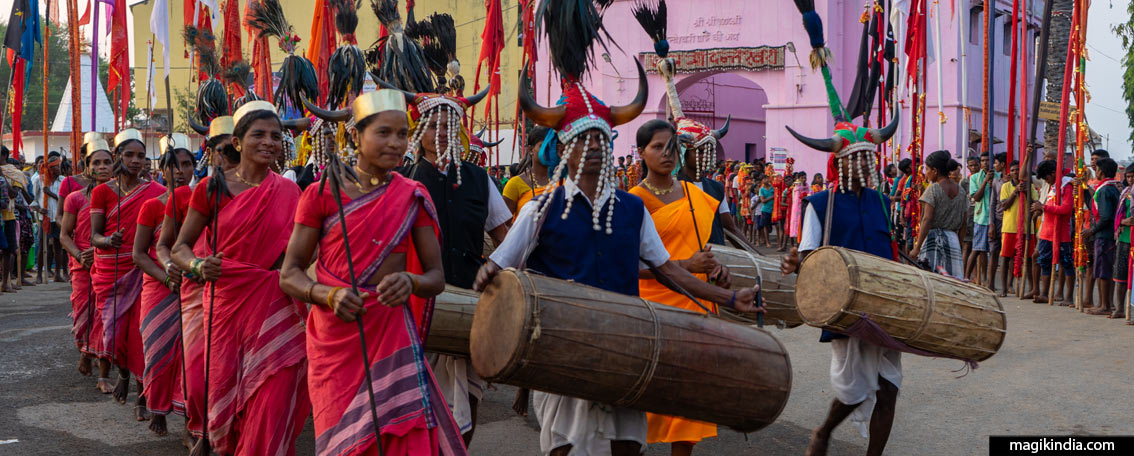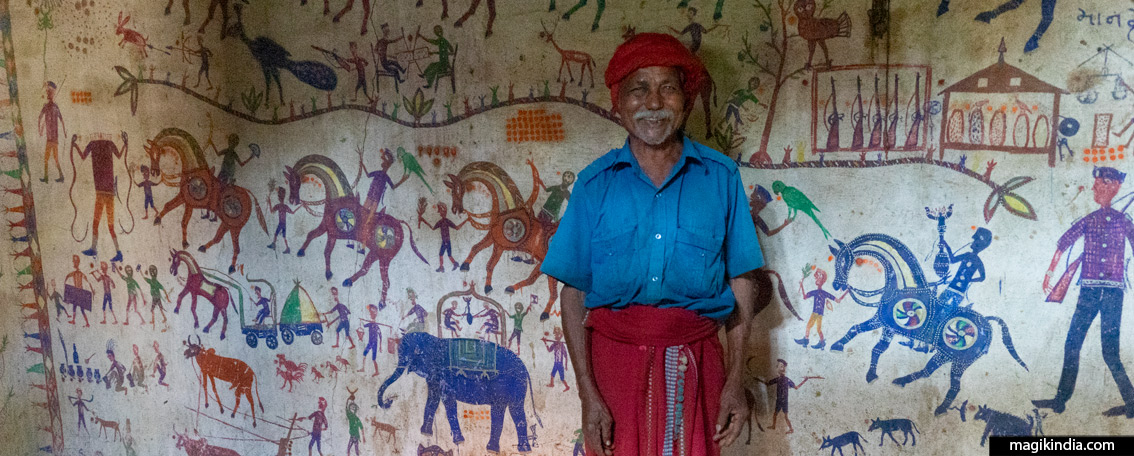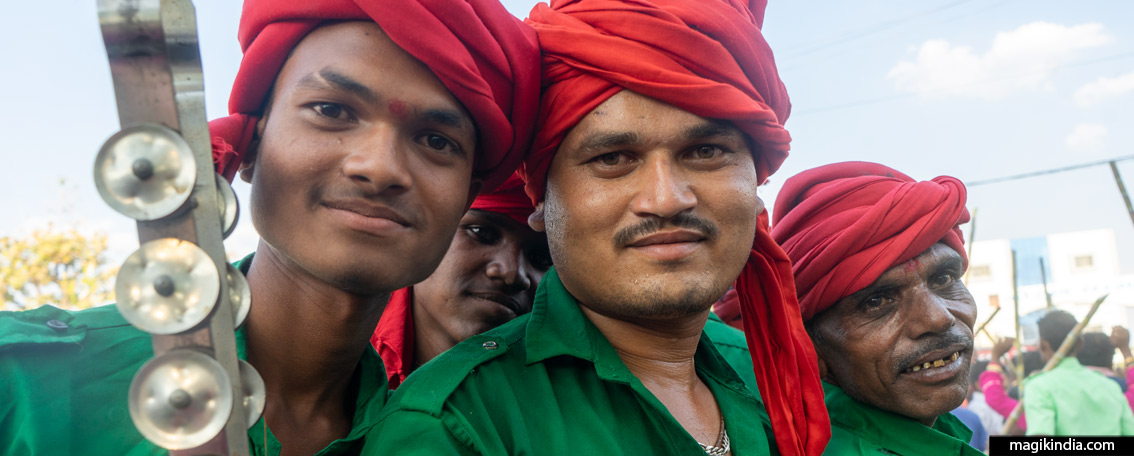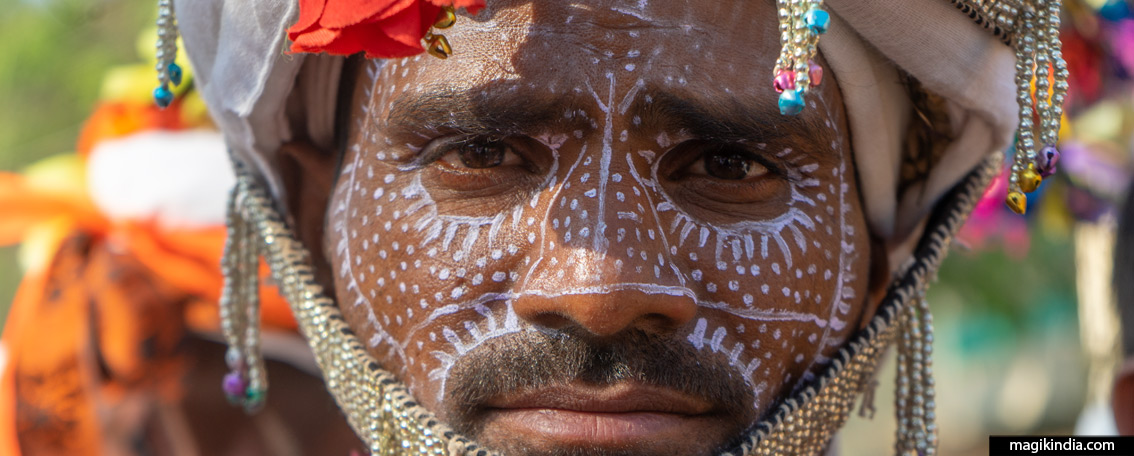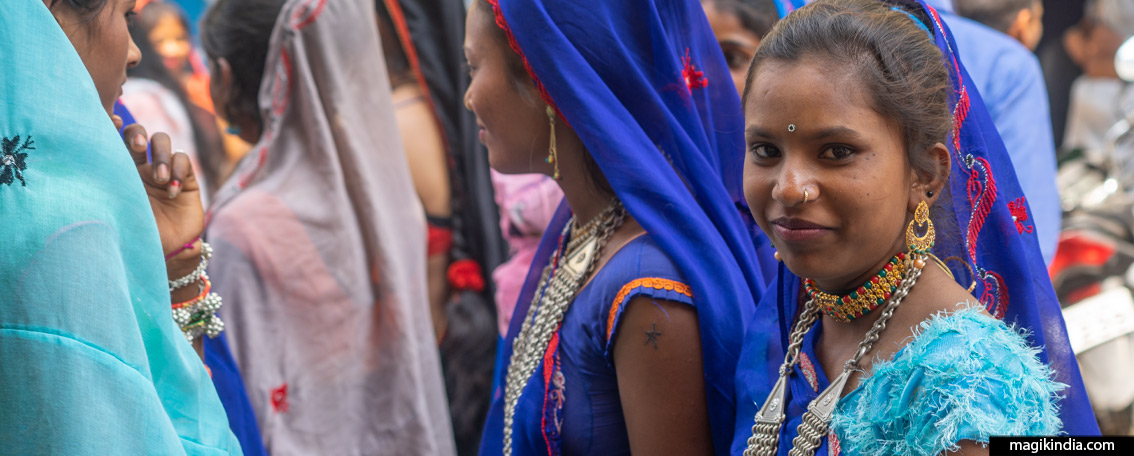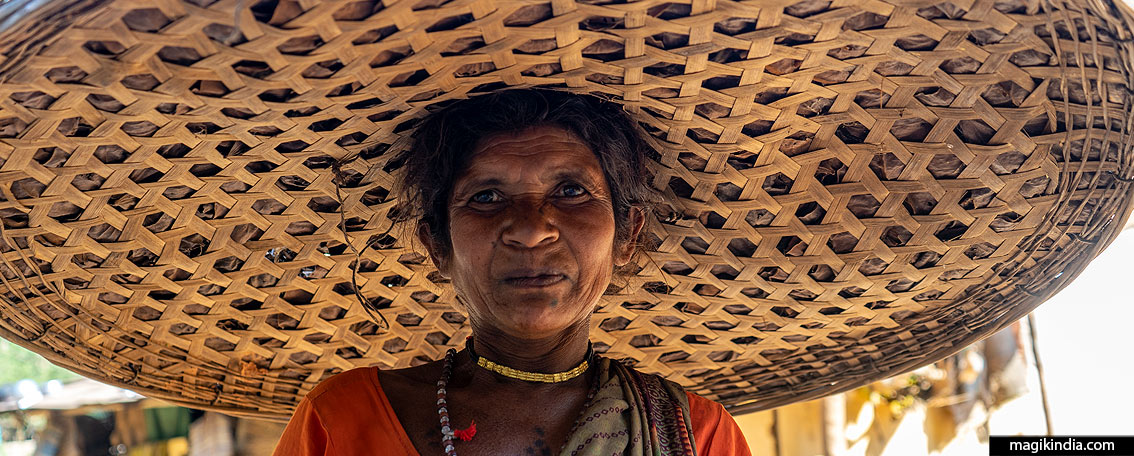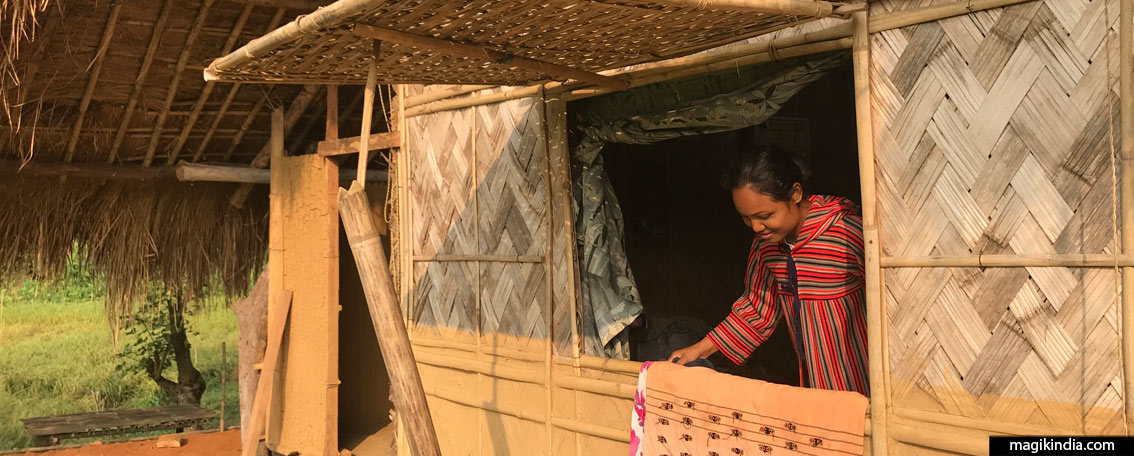
My stay with the Rabhas, Assam
During a trip, there is always a climax, a moment more striking than another, which we cherish long after. My stay with the Rabhas, on the shores of Lake Chandubi, Assam, was one of these. The generosity of my hosts and the serene beauty of the place still accompany me.
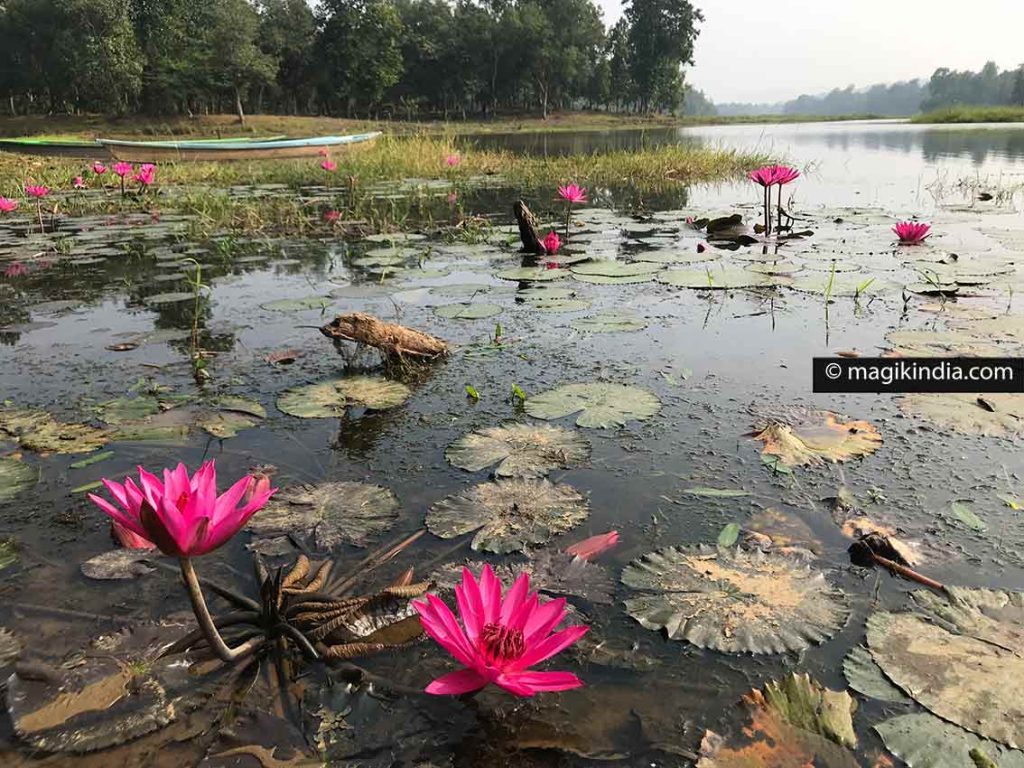
The Mirza Rajapara road on which we had been driving for about twenty kilometers suddenly stops. In front of me, the lake Chandubi where I am about to spend a memorable stay with the Rabhas, one of the many indigenous peoples of Assam.
Formed as a result of the 1897 earthquake, the lake nestles at the foothills of Garo in Kamrup district, at a distance of 60 kilometers from the city of Guwahati.
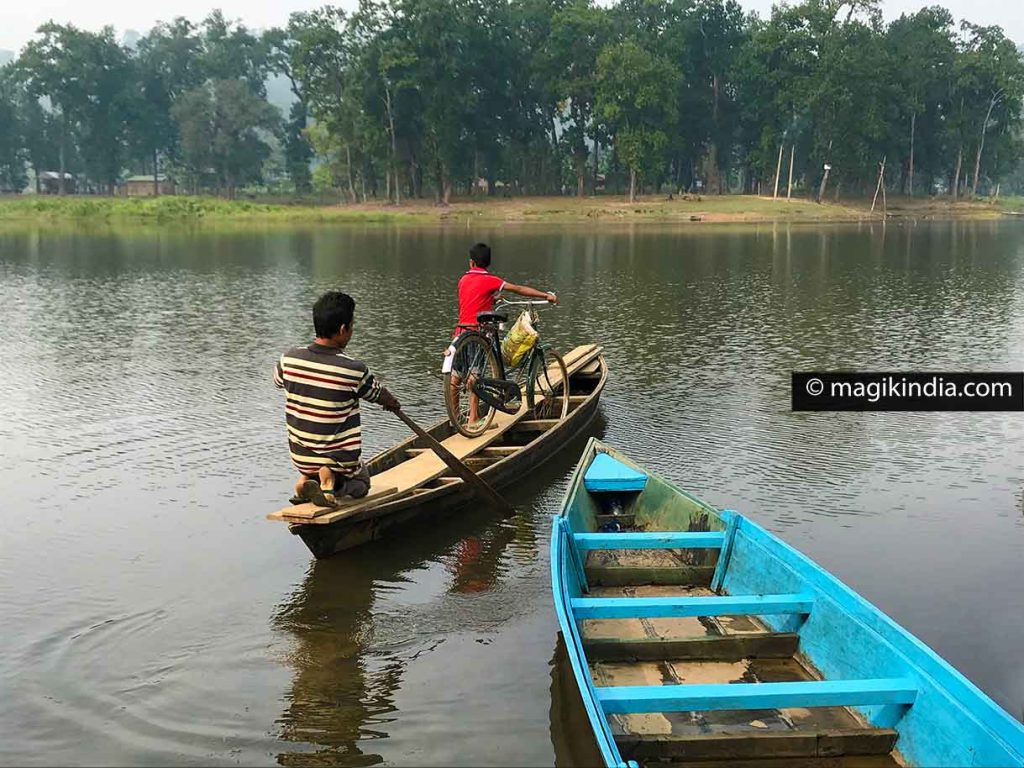
My host, Sanjay Rabha, is waiting for me with a large smile and he gets me into the blue boat that will take me to his hamlet, on the opposite bank. A man and his son on a bicycle have already taken the lead.
When I arrive, the rest of Sanjay’s family welcomes me with the same generous smile. I settle in a traditional bamboo hut on stilts, with sober comfort, however cozy. I was told later that I was the first traveler to “experience” their guest house. The family has just opened the place.
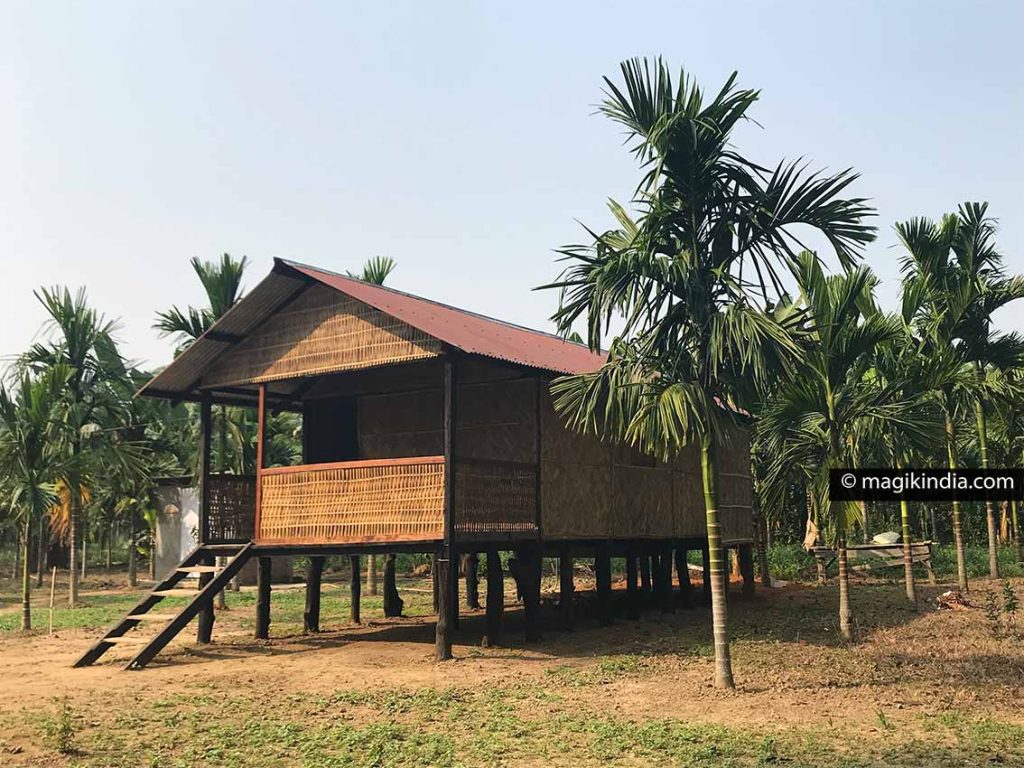
It’s lunch time and I am served delicious specialties from the region concocted with organic products from the village.
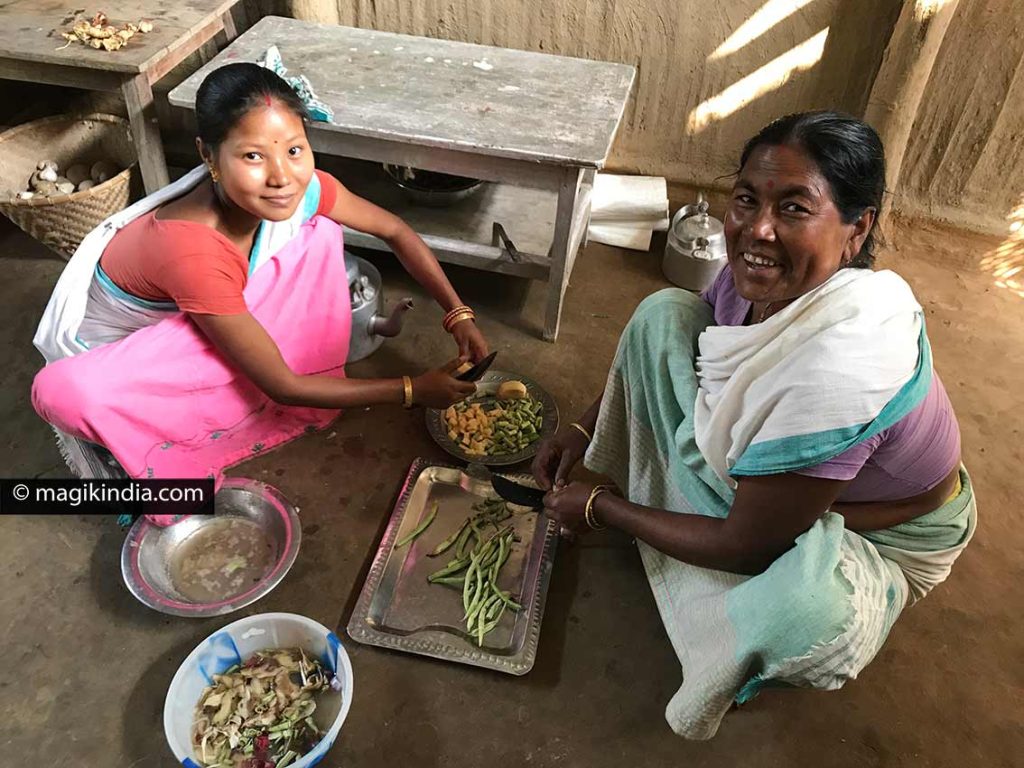
I stay all afternoon chatting with the family who show me around the owner. Alaka ends up settling on a loom where a purple cotton saree is being made. Hand weaving is a tradition that continues throughout Assam and I did not fail to bring back one of these handicrafts.
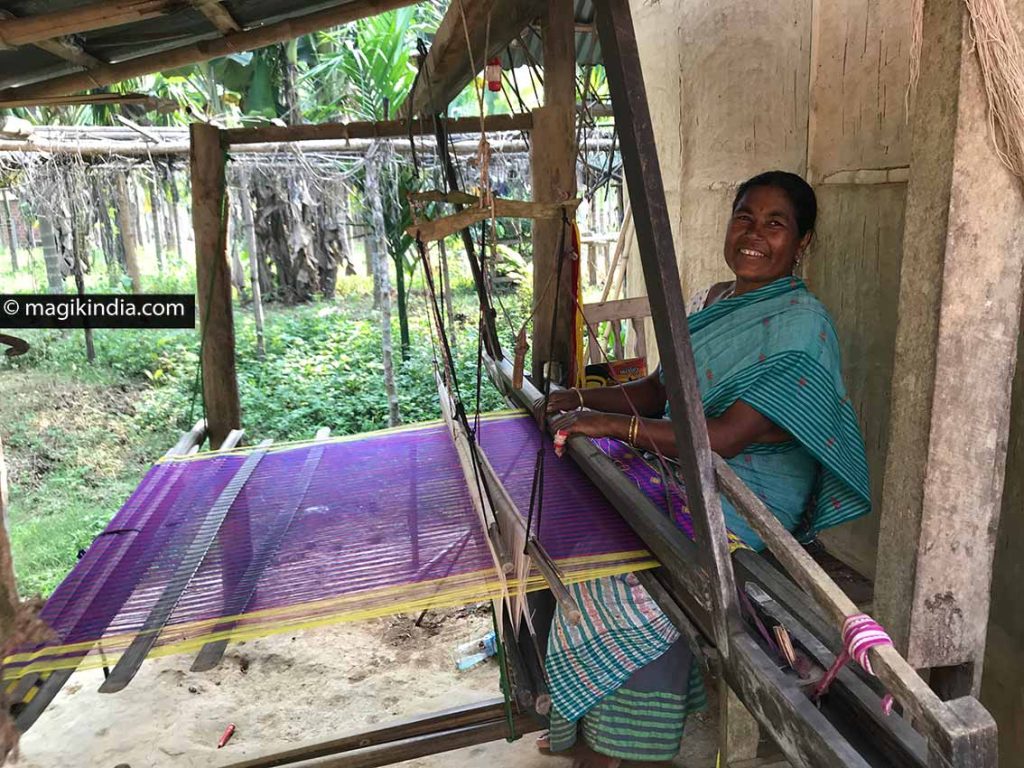
The next morning, I set off with Sanjay for a hike in the thick jungle that envelops the lake. As we trek along the main village trail, we meet Basanta Rabha, a friend of Sanjay who joins our group. About ten kilometers further, we land on the edge of a stream tumbling down the rocks between the intertwined roots of secular trees.
Sanjay, who had picked a “robab tenga”, a kind of pomelo, on the way, begins to “shell” it on banana leaves with the help of Basanta. The preparation of this frugal snack sprinkled with spices was done to the sound of a traditional Assamese song sung with talent by Basanta… What else?
The walk thus continues in the same atmosphere of joy punctuated by the machete blows of Sanjay who clears a path for us in the forest.
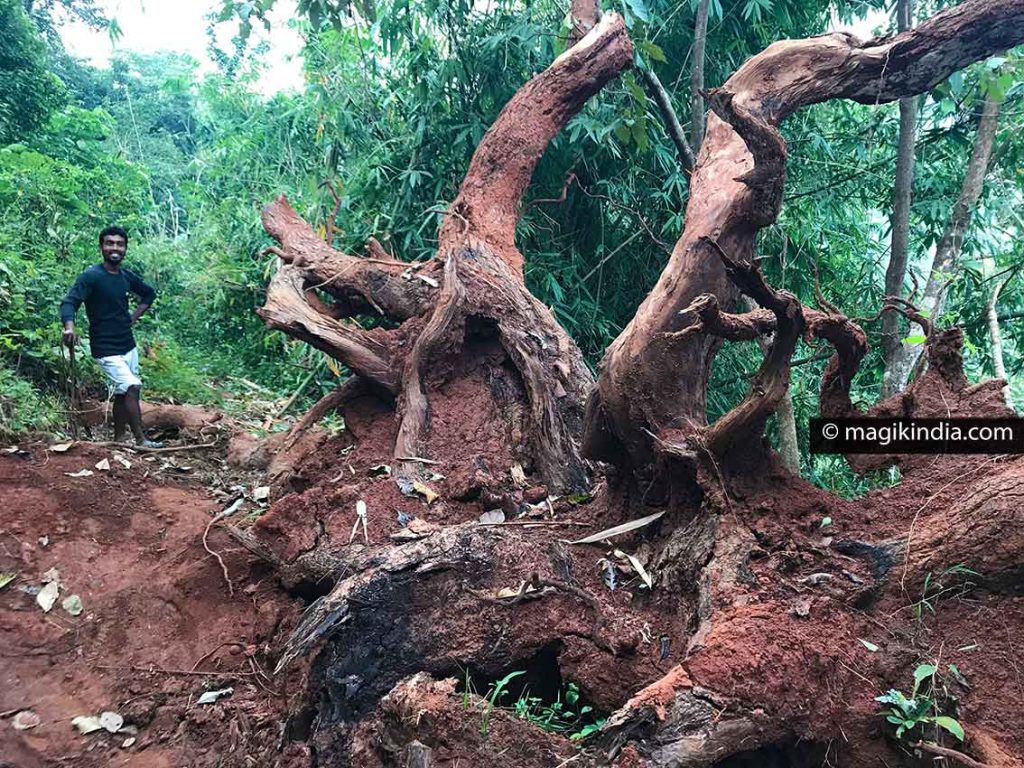
After a loop of about two hours, we return slowly to the village. Our path crosses that of Malika Rabha who stands in front of her bamboo house whose architecture has nothing to envy to the best so-called “bioclimatic” houses.
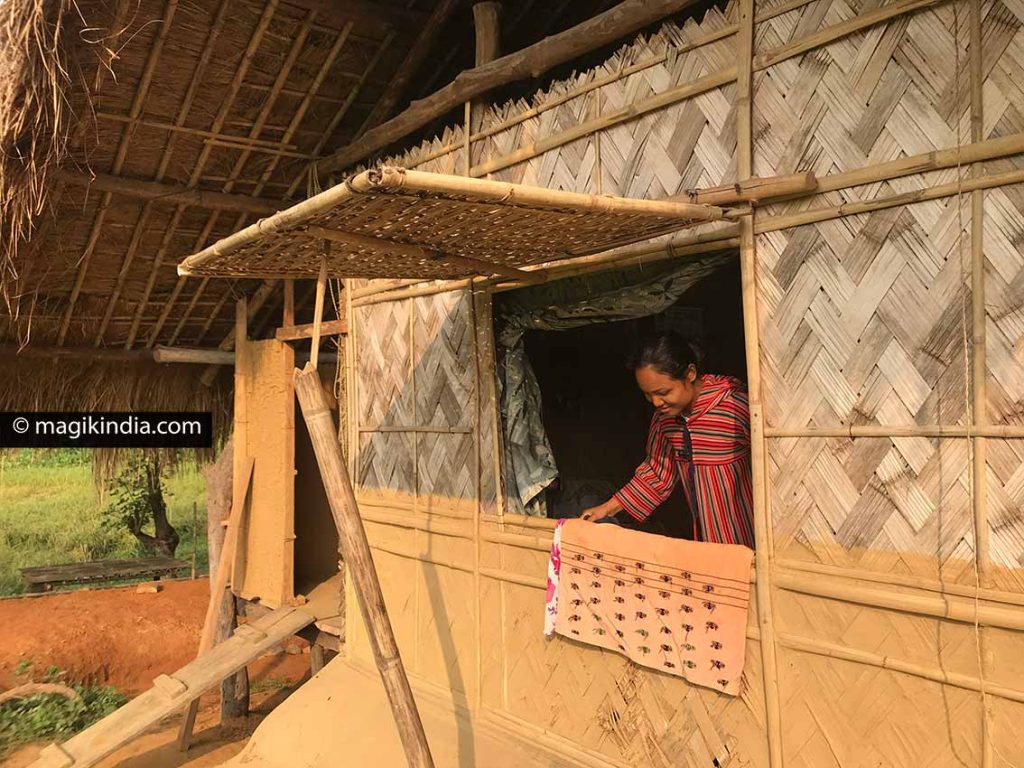
The sweet-faced young woman offers us a chaï prepared on a “chula”, an open-air earthenware stove. We savor our tea in front of a natural tableau of wild red hibiscus and rice paddy.
And, precisely, when we resume our journey, at the edge of the village, we witness the cutting of the rice plants which a couple of farmers then carefully gather in sheaves. The Rabha village is self-sufficient.
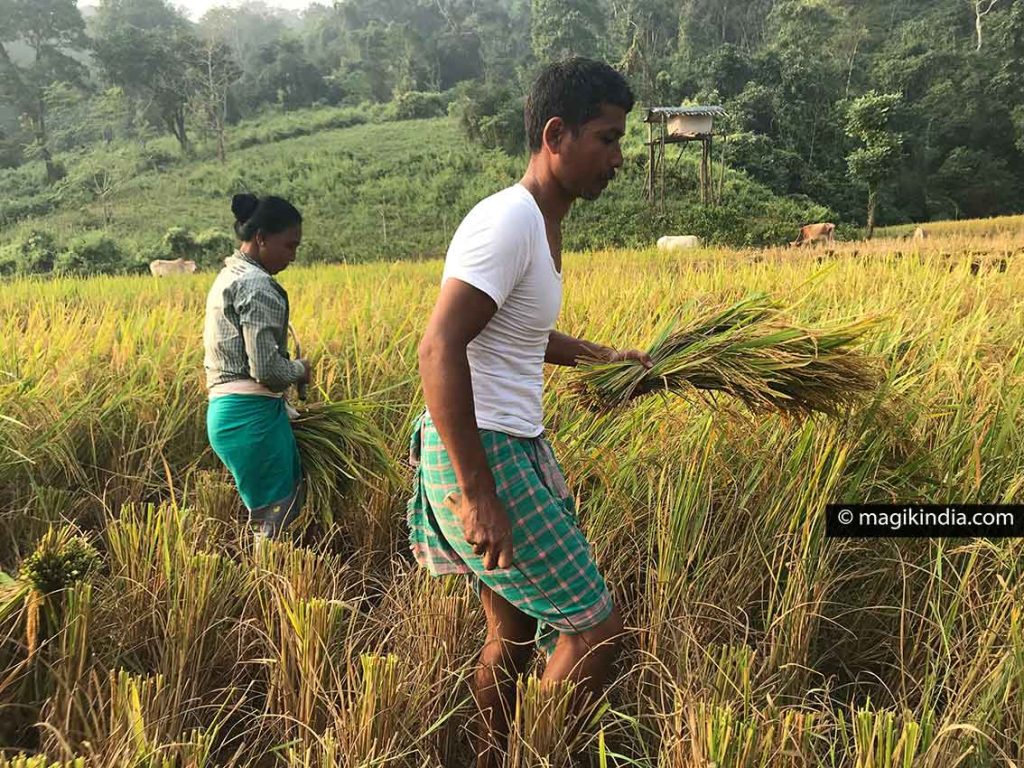
The rest of the day passes quietly with Sanjay’s neighbors who, for the occasion, take out their musical instruments and start singing traditional songs accompanied by their local “drink” made from fermented rice.
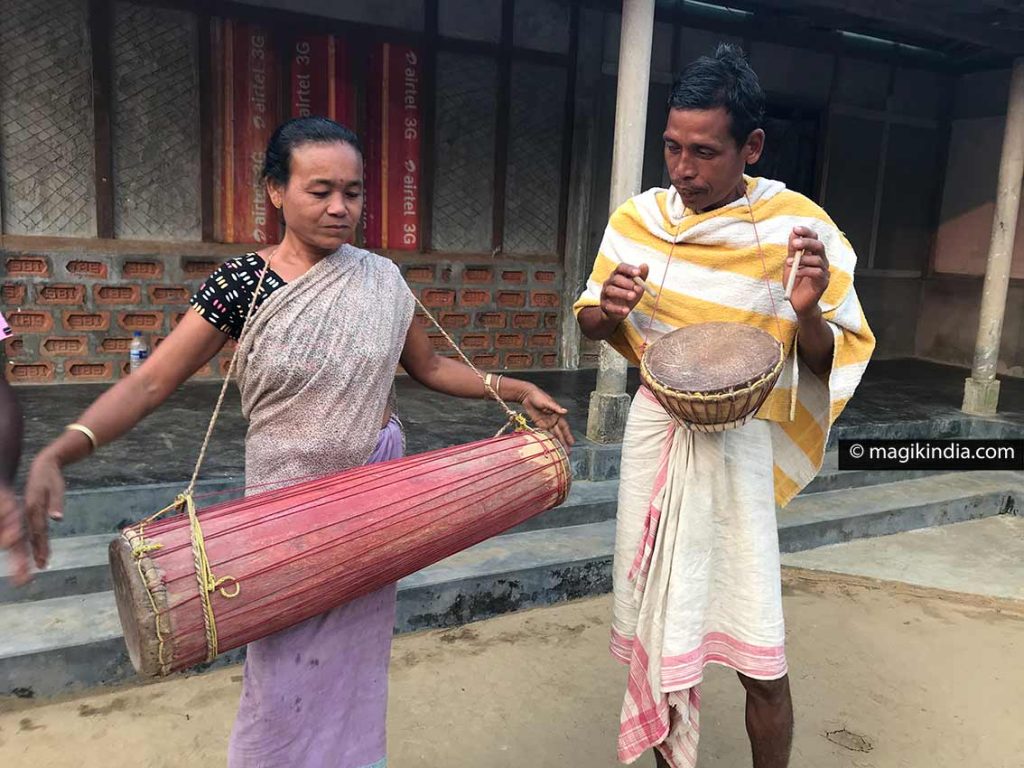
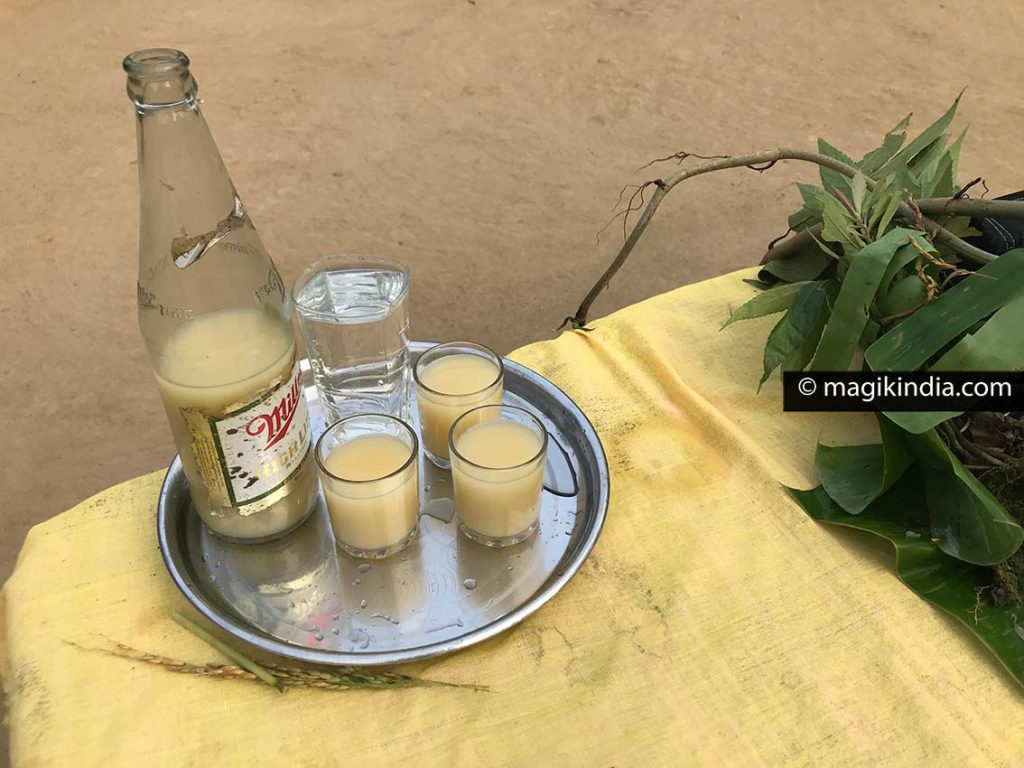
For my last day at Lake Chandubi, I went to meet the other inhabitants of the lake, the Garo in particular, who introduce me to their silkworm breeding. Sericulture is, in fact, the great specialty of the region.
Farmers collect the worms on long bamboo rakes which are then moved from tree to tree to feed on fresh leaves.
Contrary to our Western countries where the silkworm feeds only on mulberry leaves, silk here is produced from different species of trees and plants: the mulberry gives “white pad” silk, the leaves castor bean gives “Eri” silk and som leaves, a variety of laurel, gives “golden silk”.
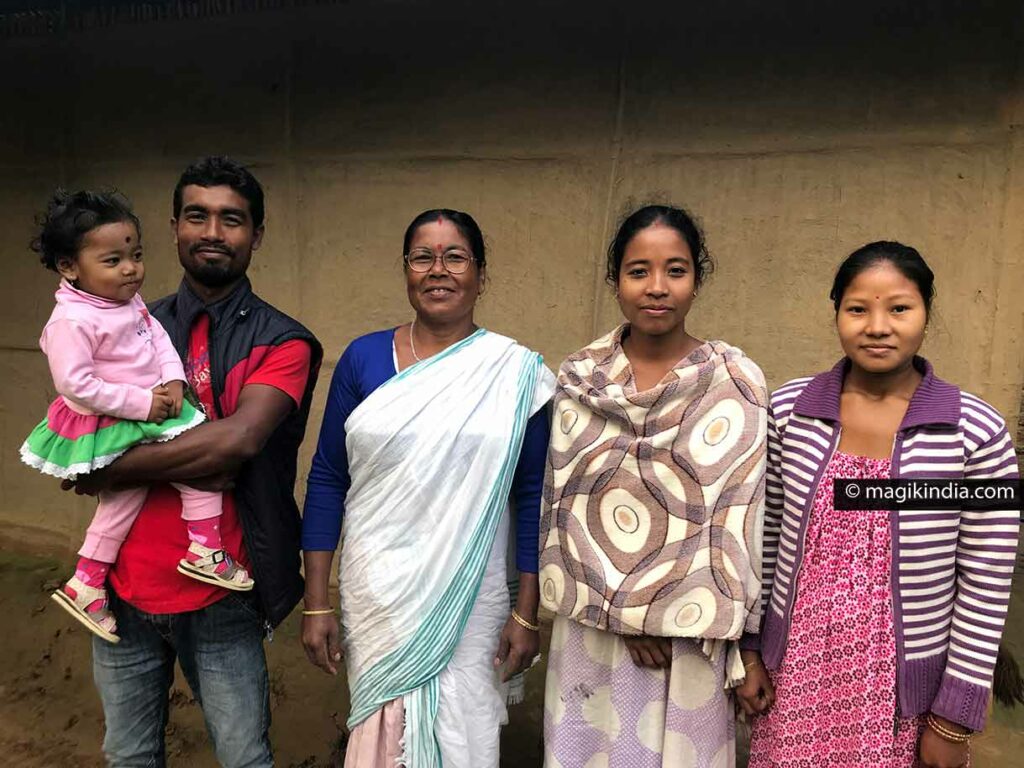
My stay is coming to an end, my hosts have all gathered to say goodbye. Just before leaving, I meet a group of teachers on a class trip with their students; the colorful saris they wear reflect the diversity and cultural richness of Assam. What a great conclusion to the trip!


